Imagine turning a cottage into a majestic skyscraper without having to deliver any innovation or construction. This is what wavelength division multiplexing (WDM) allows with your existing fiber optic network. The hunger for bandwidth propels service providers to make a substantial investment in upgrading fiber cabling infrastructure. This can be a challenge both economically and practically. However, the WDM technology offers an alternative to increase capacity on the fiber links that are already in place. Without deploying additional optical fiber, WDM greatly reduces the cost of network expansion.
WDM Technology Explanation
Let’s begin with the most fundamental question: What is WDM technology? Short for wavelength division multiplexing, WDM is a way of transmitting multiple simultaneous data streams over the same fiber. Since this happens simultaneously, WDM does not impact transmission speed, latency or bandwidth. WDM functions as multiplexing multiple optical signals on a single fiber by using different wavelengths, or colors, of laser light to carry different signals. Network managers can thus realize a multiplication effect in their available fiber’s capacity with WDM.
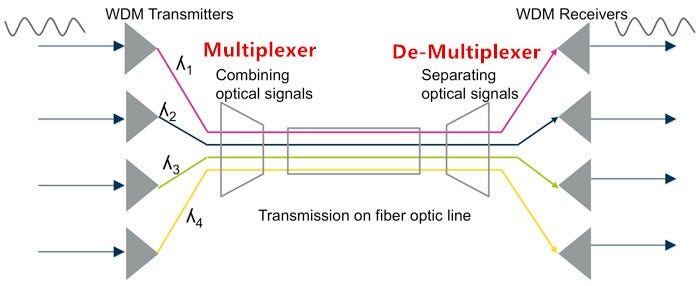
To implement WDM to the infrastructure is rather simple, WDM setup generally consists of the following:
- WDM transmit devices, each operating at a different wavelength
- Multiplexer, a passive device that combines the different light sources into a blended one
- Fiber infrastructure
- De- Multiplexer, a passive device that splits the blended light source into separate ones
- WDM receive devices
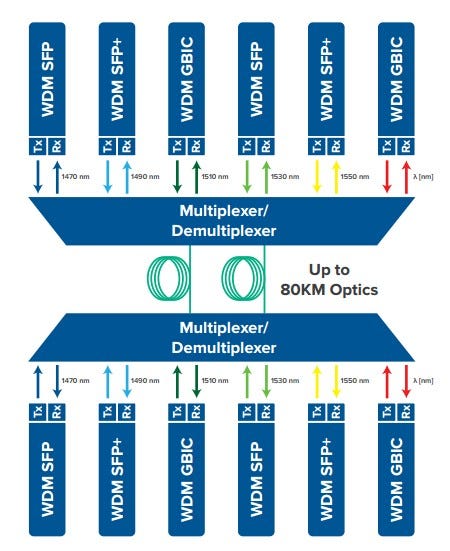
What Capacity Increase Can We Expect?
There are two variants of WDM: CWDM (coarse wave-division multiplexing) and DWDM (dense wave-division multiplexing). The only difference between them is the band in which they operate, and the spacing of the wavelengths and thus the number of wavelength or channels that can be used.
When using WDM on existing fiber cabling, you should also consider the fiber type (single-mode or multimode) and loss level. For CWDM, 8 to 18 devices may be possible, whereas for DWDM, up to 40 channels are the most common case, but it is possible to reach up to 160 channels.
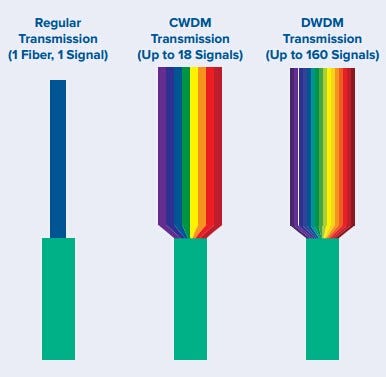
Choose the Right Type of WDM
We’ve known that both CWDM and DWDM are available to optimize network capacity. Then, here comes another question: should I choose CWDM or DWDM technology? Let’s make a comparison of them.
Coarse Wave Division Multiplexing (CWDM)
CWDM increases fiber capacity in either 4, 8, or 18 channel increments. By increasing the channel spacing between wavelengths on the fiber, CWDM allows for a simple and affordable method of carrying up to 18 channels on a single fiber. CWDM channels each consume 20 nm of space and together use up most of the single-mode operating range.
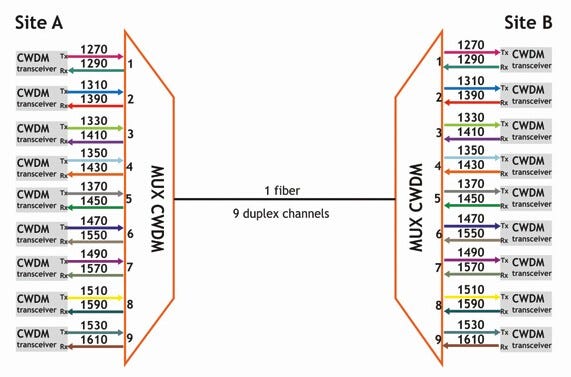
Benefits of CWDM:
- Passive equipment that uses no electrical power
- No configuration is necessary, much lower cost per channel than DWDM
- Scalability to grow the fiber capacity as needed
- With little or no increased cost
- Protocol transparent and ease of use
Drawbacks of CWDM:
- 18 channels may not be enough, and fiber amplifier cannot be used with them
- Passive equipment that has no management capabilities
- Not the ideal choice for long-haul networks
Dense Wave Division Multiplexing (DWDM)
DWDM allows many more wavelengths to be combined onto one fiber. DWDM comes in two different versions: an active solution and a passive solution. An active solution requires wavelength management and is well-suited for applications involving more than 32 links over the same fiber. In most cases, passive DWDM is regarded as a more realistic alternative to active DWDM.
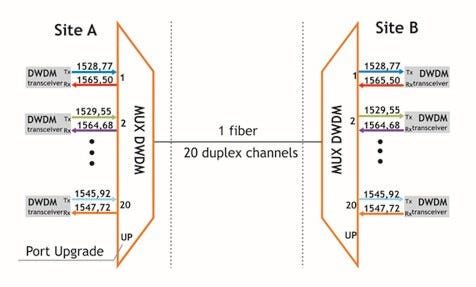
Benefits of DWDM:
- Ideal for use in long-haul and areas of greater customer density
- Up to 32 channels can be done passively
- Up to 160 channels with an active solution
- Active solutions involve EDFA optical amplifiers to achieve longer distances
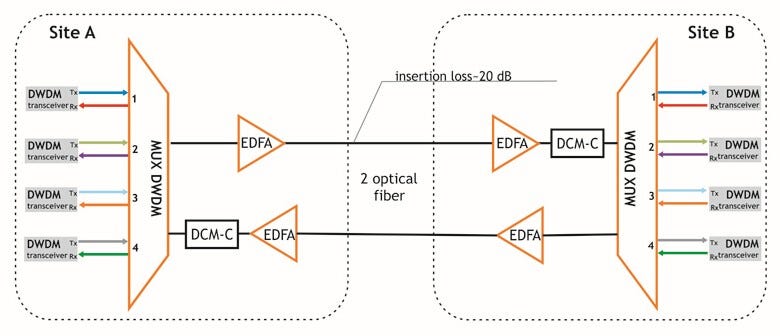
Drawbacks of DWDM:
- DWDM solutions are quite expensive
- Active DWDM solutions require a lot of set-up and maintenance expense
- Very little scalability for deployments under 32 channels, much unnecessary cost is incurred per channel
To sum it up, CWDM can be typically used for applications that do not require the signal to travel great distances and in locations where not many channels are required. While for applications that demand for a high number of channels or for long-haul applications, DWDM is the ideal solution.
Considerations for Deploying WDM
Making sure that the CWDM and DWDM will perform properly is critical, so one should account for the following aspects for when deploying.
1.Before buying a mux or demux for use in an unconditioned cabinet or splice case, verify that the operating temperature will fit the application. And ensure that the CWDM or DWDM will be able to operate within the temperatures in which they will be placed.
2.Take the insertion loss of WDM network into account. Using the maximum insertion loss value in the link budget is a good idea. Calculate the loss for both the mux and demux components.
Conclusion
WDM technology provides an ideal solution for fiber exhaust problem that many communication providers are experiencing. It eliminates the need for investing on new fiber construction projects while greatly increases fiber capacity of the existing infrastructure. Hope what presented in the article could help you to choose the right WDM solution.
HTFuture can provide you the full range of CWDM DWDM products that you need. If there is any inquiry, just let me know please.
Ivy: sales6@htfuture.com Skype: live:sales6_1683
HTFuture team are ready and happy to assist you.
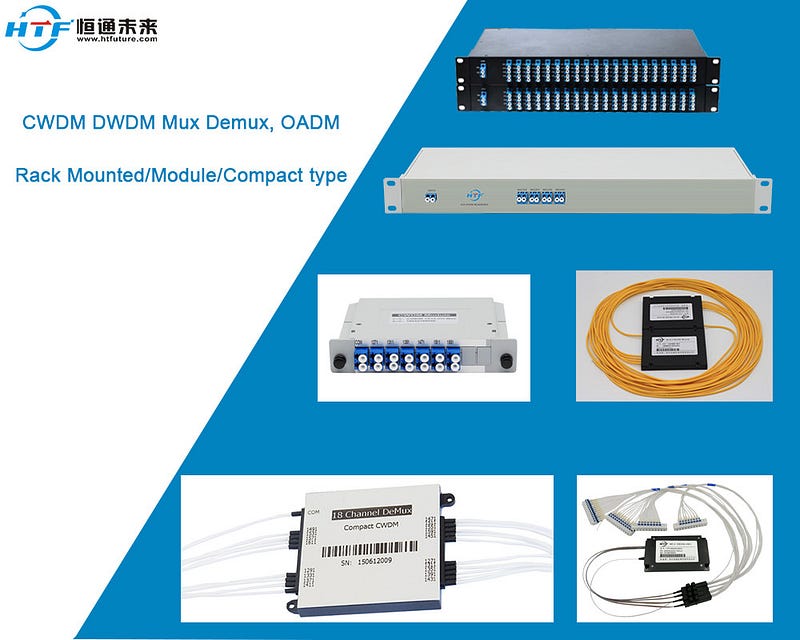



没有评论:
发表评论